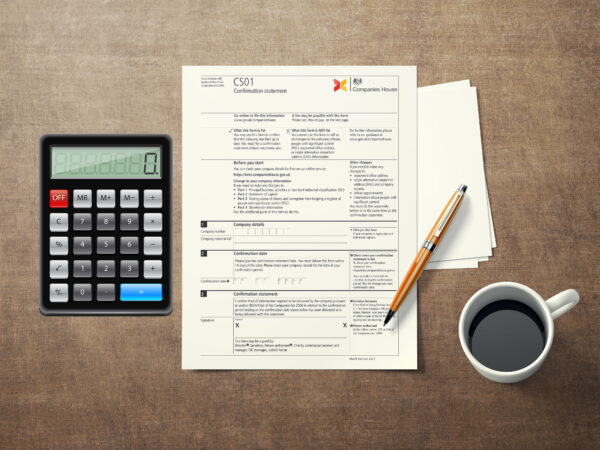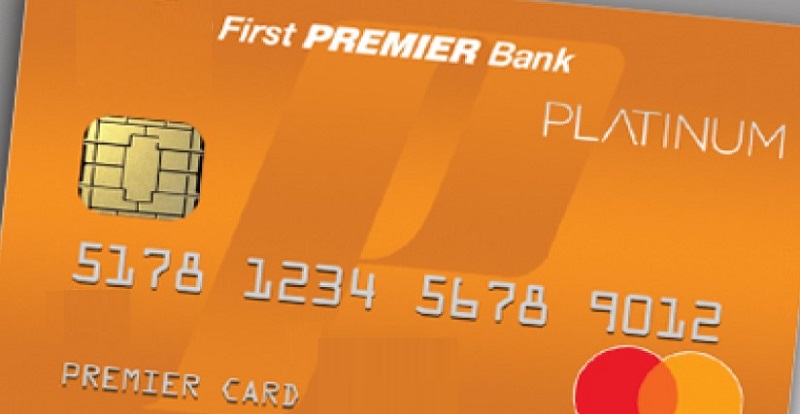-
Table of Contents
“Save more, worry less: Master the art of banking without the fees.”
Understanding and avoiding common banking fees is essential for individuals looking to manage their finances effectively. Banking fees can quickly add up and eat into your hard-earned money if you’re not careful. By having a clear understanding of these fees and taking proactive steps to avoid them, you can save yourself significant amounts of money in the long run. In this article, we will explore some of the most common banking fees, provide tips on how to avoid them, and empower you to make informed decisions when it comes to your banking needs.
How to Identify and Avoid Hidden Banking Fees
Understanding and Avoiding Common Banking Fees
Banking fees can be a frustrating and costly aspect of managing your finances. From monthly maintenance fees to overdraft charges, these fees can quickly add up and eat into your hard-earned money. However, with a little knowledge and careful planning, you can identify and avoid these hidden fees, saving yourself both time and money.
One of the first steps in avoiding banking fees is to understand what they are and how they can impact your finances. Many banks charge monthly maintenance fees for simply having an account with them. These fees can range from a few dollars to upwards of $20 per month, depending on the bank and the type of account you have. By being aware of these fees, you can make an informed decision about which bank to choose and which account type best suits your needs.
Another common fee to watch out for is the overdraft fee. This fee is charged when you spend more money than you have available in your account, resulting in a negative balance. Overdraft fees can be quite steep, often ranging from $25 to $35 per transaction. To avoid these fees, it’s important to keep track of your spending and ensure that you always have enough funds in your account to cover your expenses.
In addition to monthly maintenance fees and overdraft charges, some banks also impose fees for using out-of-network ATMs. These fees can range from $2 to $5 per transaction, and they can quickly add up if you frequently find yourself needing to withdraw cash from ATMs that are not affiliated with your bank. To avoid these fees, it’s a good idea to plan ahead and use ATMs that are within your bank’s network whenever possible.
One often overlooked fee is the foreign transaction fee. If you frequently travel internationally or make purchases from foreign merchants, this fee can catch you off guard. Foreign transaction fees are typically a percentage of the total transaction amount, ranging from 1% to 3%. To avoid these fees, consider opening a bank account that offers no foreign transaction fees or using a credit card that waives these fees.
To identify and avoid these common banking fees, it’s important to carefully review your bank statements and account terms and conditions. Look for any mention of fees and make note of when and how they are charged. Additionally, take advantage of online banking tools and mobile apps that can help you keep track of your account balances and spending.
When choosing a bank, be sure to compare the fees and account features of different institutions. Look for banks that offer low or no monthly maintenance fees, free overdraft protection, and a wide network of ATMs. By doing your research and choosing a bank that aligns with your financial goals, you can minimize the impact of banking fees on your wallet.
In conclusion, understanding and avoiding common banking fees is essential for maintaining control over your finances. By familiarizing yourself with the various fees that banks charge and taking proactive steps to avoid them, you can save yourself both time and money. Remember to carefully review your bank statements, choose a bank that offers favorable account terms, and utilize online banking tools to stay on top of your finances. With these strategies in place, you can navigate the world of banking fees with confidence.
Understanding the Different Types of Banking Fees and How to Minimize Them
Understanding and Avoiding Common Banking Fees
Banking fees can be a frustrating and costly aspect of managing your finances. From monthly maintenance fees to overdraft charges, these fees can quickly add up and eat into your hard-earned money. However, by understanding the different types of banking fees and taking proactive steps to minimize them, you can keep more of your money in your pocket.
One of the most common types of banking fees is the monthly maintenance fee. This fee is typically charged by banks to cover the costs of maintaining your account. While some banks may waive this fee if you meet certain requirements, such as maintaining a minimum balance or setting up direct deposit, others may charge it regardless. To avoid this fee, it’s important to carefully review the terms and conditions of your account and choose a bank that offers fee-free or low-fee options.
Another fee that many people encounter is the overdraft fee. This fee is charged when you spend more money than you have available in your account, resulting in a negative balance. Overdraft fees can be quite steep, often ranging from $30 to $40 per transaction. To avoid these fees, it’s crucial to keep track of your account balance and ensure that you have sufficient funds before making a purchase. Setting up alerts or notifications through your bank’s mobile app can help you stay on top of your account balance and avoid costly overdraft fees.
In addition to monthly maintenance fees and overdraft charges, there are several other common banking fees to be aware of. ATM fees, for example, can quickly add up if you frequently use ATMs that are not affiliated with your bank. To avoid these fees, try to use ATMs that are within your bank’s network or consider switching to a bank that offers fee-free ATM access.
Foreign transaction fees are another type of fee that can catch many people off guard. If you frequently travel internationally or make purchases from foreign merchants, these fees can significantly increase the cost of your transactions. To minimize foreign transaction fees, consider using a credit card that offers no foreign transaction fees or a bank that specializes in international banking.
In addition to understanding the different types of banking fees, there are several steps you can take to minimize these fees. First and foremost, it’s important to choose a bank that aligns with your financial needs and offers fee-free or low-fee accounts. Research different banks and compare their fee structures to find the best option for you.
Another way to minimize banking fees is to maintain a minimum balance in your account. Many banks offer fee waivers or reduced fees if you maintain a certain balance in your account. By keeping a close eye on your account balance and avoiding unnecessary withdrawals, you can avoid monthly maintenance fees and potentially qualify for other fee waivers.
Lastly, it’s important to regularly review your bank statements and account activity. Mistakes can happen, and you may be charged fees in error. By carefully reviewing your statements, you can catch any discrepancies and contact your bank to have the fees reversed.
In conclusion, understanding and avoiding common banking fees is essential for managing your finances effectively. By familiarizing yourself with the different types of fees, taking proactive steps to minimize them, and choosing the right bank for your needs, you can keep more of your hard-earned money in your pocket. Remember to stay vigilant, review your account activity regularly, and take advantage of fee waivers and reduced fees whenever possible. With a little effort and knowledge, you can navigate the world of banking fees and keep your financial well-being intact.
Tips for Negotiating and Waiving Banking Fees
Understanding and Avoiding Common Banking Fees
Banking fees can be a frustrating and costly aspect of managing your finances. From monthly maintenance fees to ATM withdrawal charges, these fees can quickly add up and eat into your hard-earned money. However, with a little knowledge and some negotiation skills, you can often avoid or reduce these fees. In this article, we will explore some tips for negotiating and waiving common banking fees.
One of the first steps in avoiding banking fees is to understand what fees you may encounter. Common fees include monthly maintenance fees, overdraft fees, ATM fees, and wire transfer fees. Monthly maintenance fees are typically charged by banks for the privilege of having a checking or savings account with them. Overdraft fees are incurred when you spend more money than you have in your account. ATM fees are charged when you use an ATM that is not affiliated with your bank. Lastly, wire transfer fees are applied when you send money electronically to another person or institution.
Once you have a clear understanding of the fees you may face, it’s time to start negotiating with your bank. The first step is to review your account activity and identify any patterns that may be causing you to incur fees. For example, if you frequently overdraft your account, you may want to consider setting up overdraft protection or linking your checking account to a savings account to avoid these fees. By demonstrating that you are actively working to avoid fees, you may be able to negotiate a reduction or waiver of certain charges.
When it comes to negotiating with your bank, it’s important to be polite and persistent. Start by contacting your bank’s customer service department and explaining your situation. Be clear about the fees you are trying to avoid and provide any relevant information that supports your case. For example, if you have been a long-time customer with a good track record, mention this to the representative. If the first representative you speak with is unable to help, don’t be discouraged. Ask to speak with a supervisor or consider visiting your local branch in person. Sometimes, face-to-face interactions can be more effective in getting fees waived.
Another strategy for negotiating banking fees is to shop around and compare offers from different banks. Many banks offer promotions and incentives to attract new customers, such as waiving monthly maintenance fees for a certain period or offering higher interest rates on savings accounts. By researching and comparing these offers, you may be able to find a bank that better suits your needs and offers more favorable fee structures.
In addition to negotiating with your bank, there are also steps you can take to avoid fees altogether. For example, consider using your bank’s mobile app or online banking services to monitor your account balance and transactions in real-time. This can help you avoid overdraft fees by ensuring that you always have enough funds in your account. Additionally, try to use ATMs that are affiliated with your bank to avoid ATM fees. If you need to make a wire transfer, compare the fees charged by different banks and consider using a service that specializes in low-cost transfers.
In conclusion, understanding and avoiding common banking fees is an important aspect of managing your finances. By familiarizing yourself with the fees you may encounter, negotiating with your bank, and taking proactive steps to avoid fees, you can save yourself money and frustration. Remember to be polite and persistent when negotiating with your bank, and don’t be afraid to shop around for better offers. With a little effort, you can minimize the impact of banking fees on your financial well-being.Understanding and avoiding common banking fees is crucial for individuals to effectively manage their finances. By familiarizing themselves with the various fees that banks charge, individuals can make informed decisions and take necessary steps to minimize or eliminate these fees. Some common banking fees include monthly maintenance fees, overdraft fees, ATM fees, and foreign transaction fees. To avoid these fees, individuals can opt for fee-free or low-fee banking options, maintain a minimum balance, monitor their account regularly, and use in-network ATMs. By being proactive and knowledgeable about banking fees, individuals can save money and have better control over their financial well-being.




